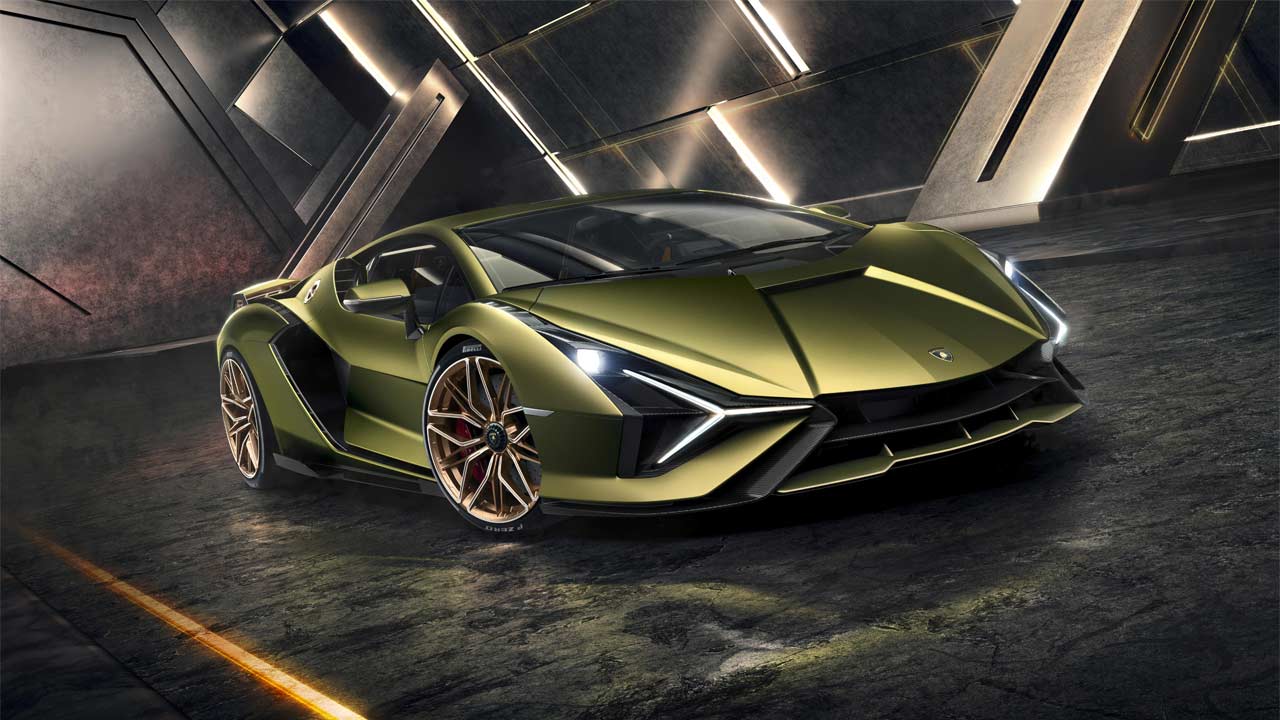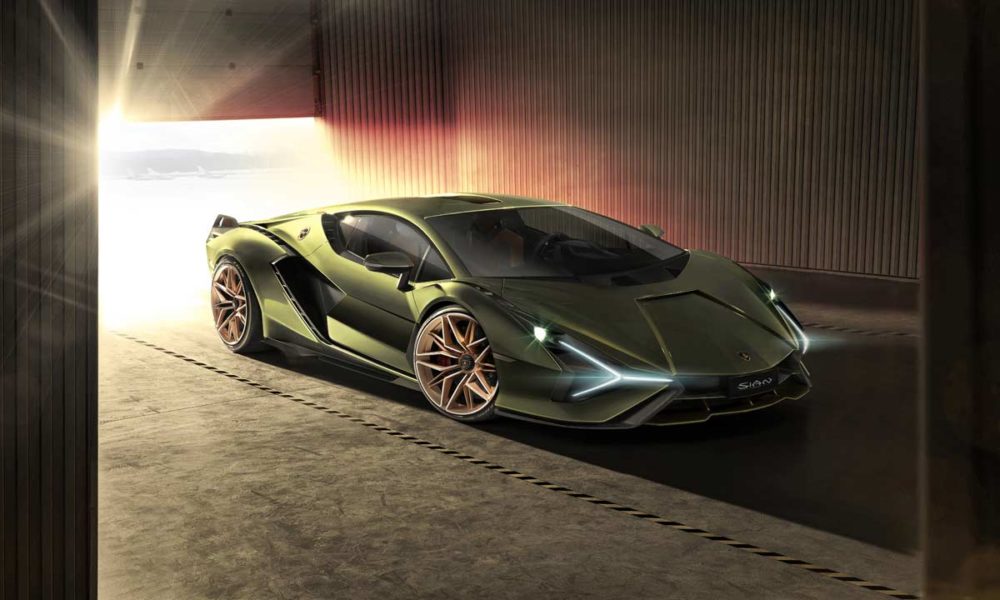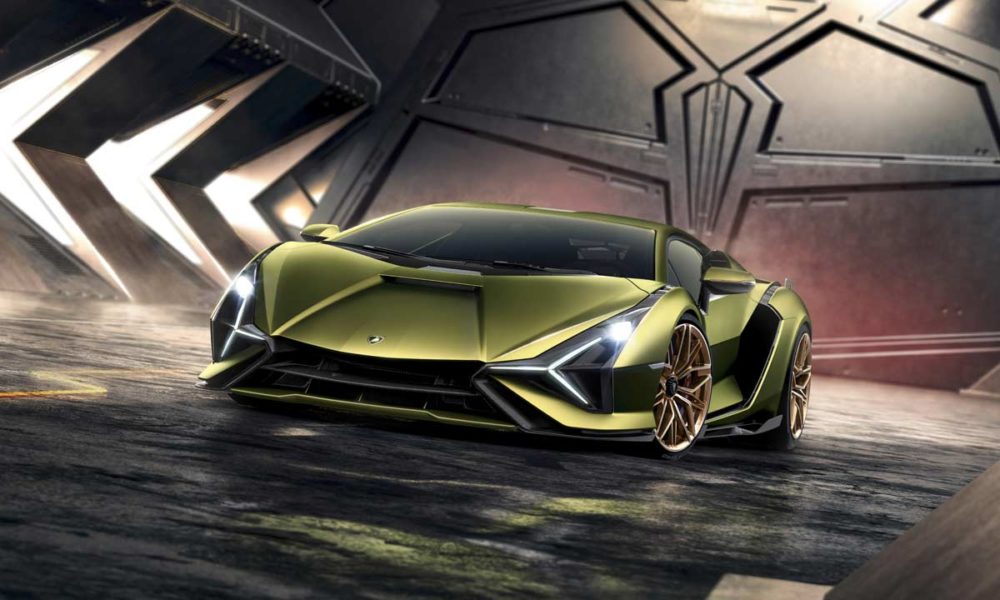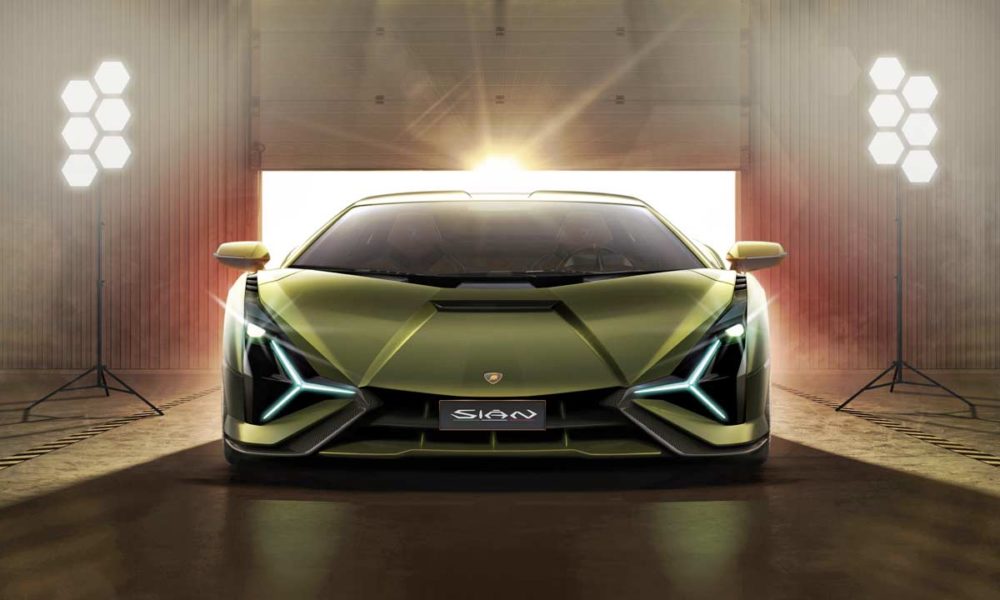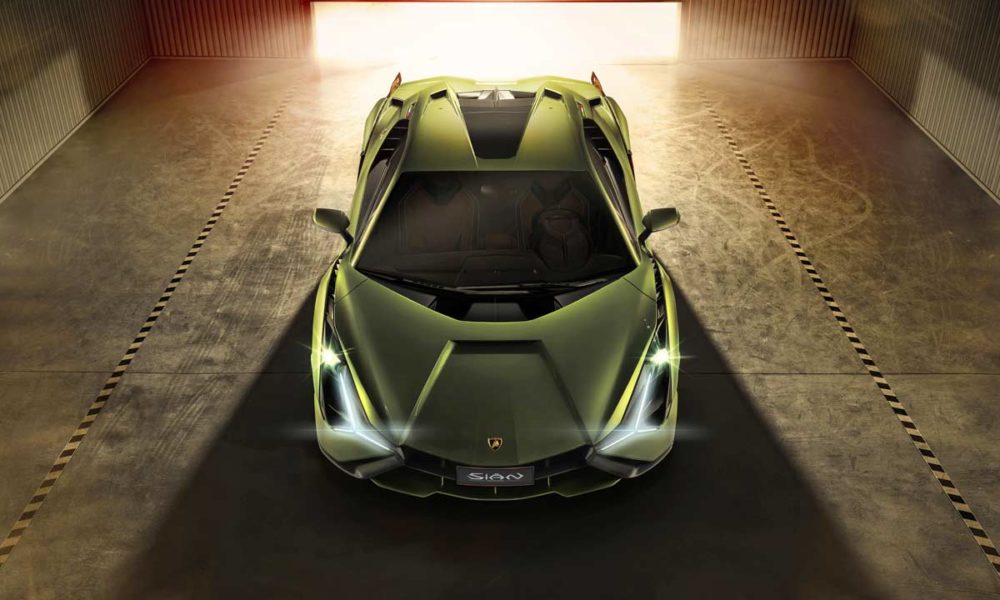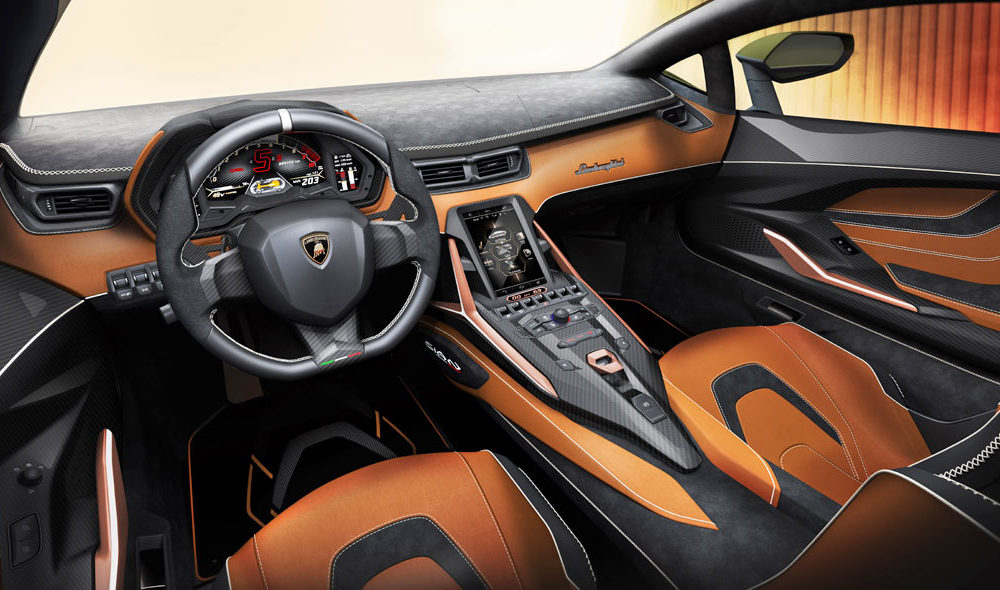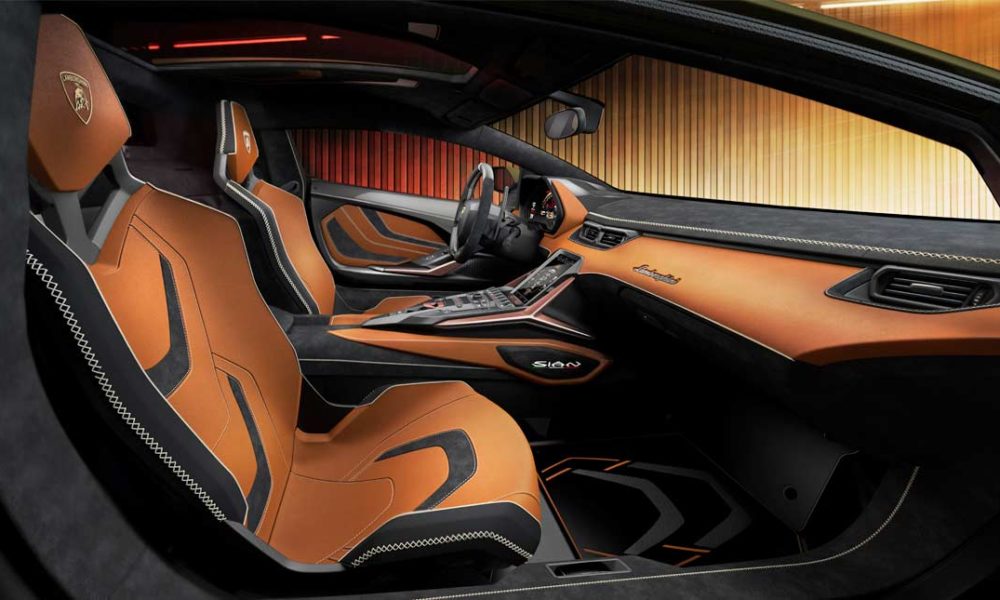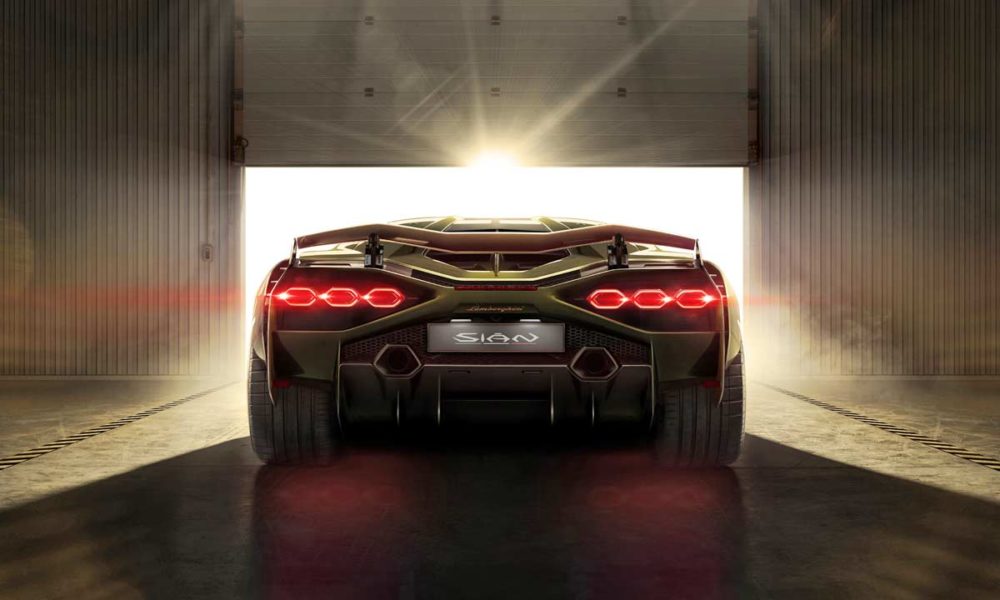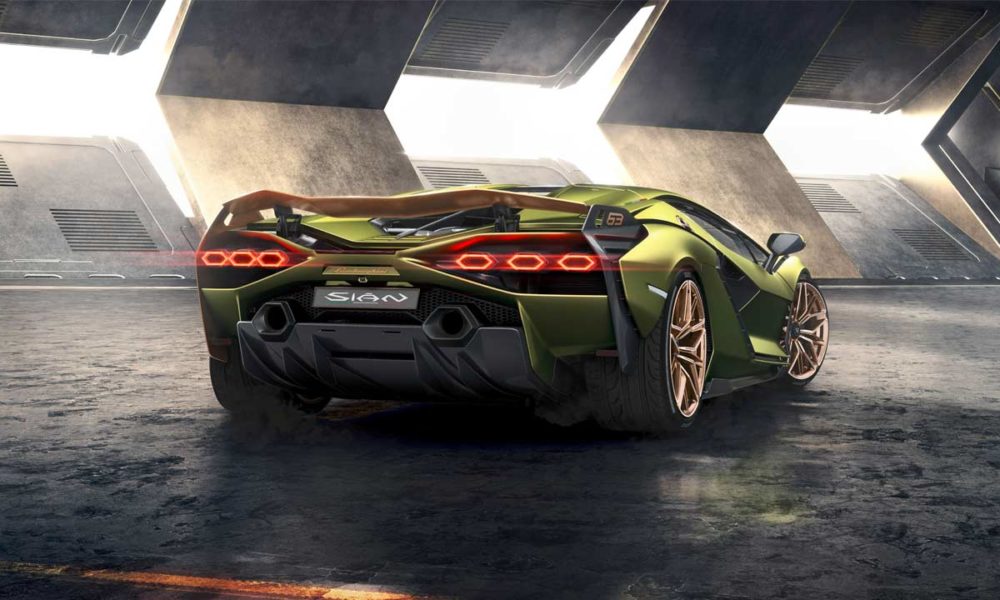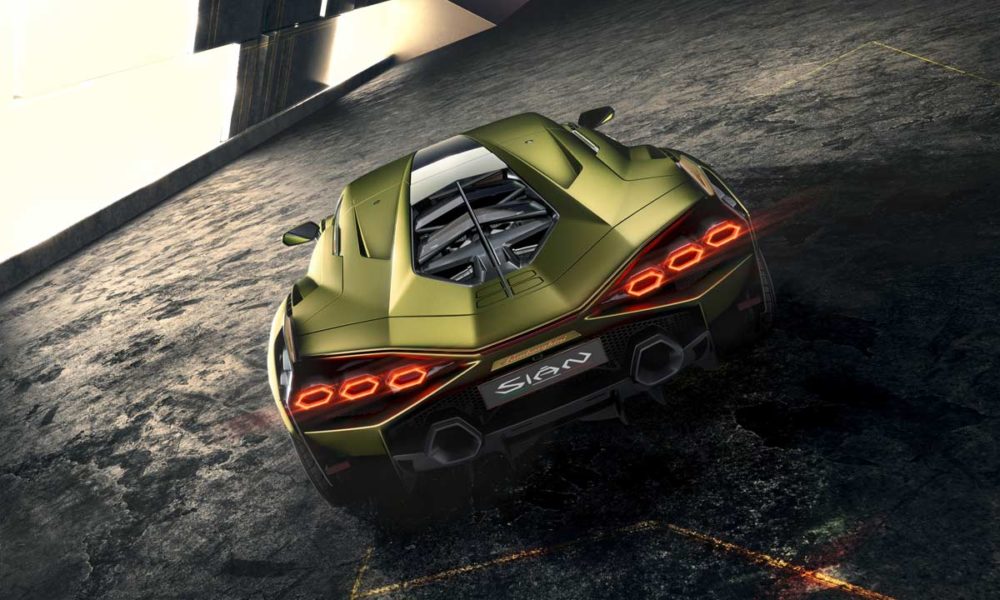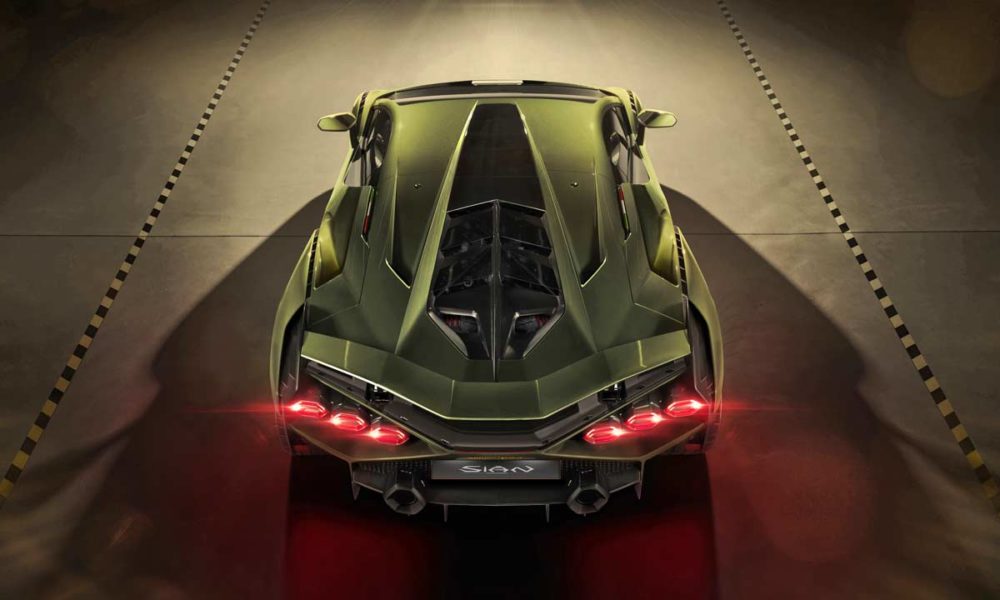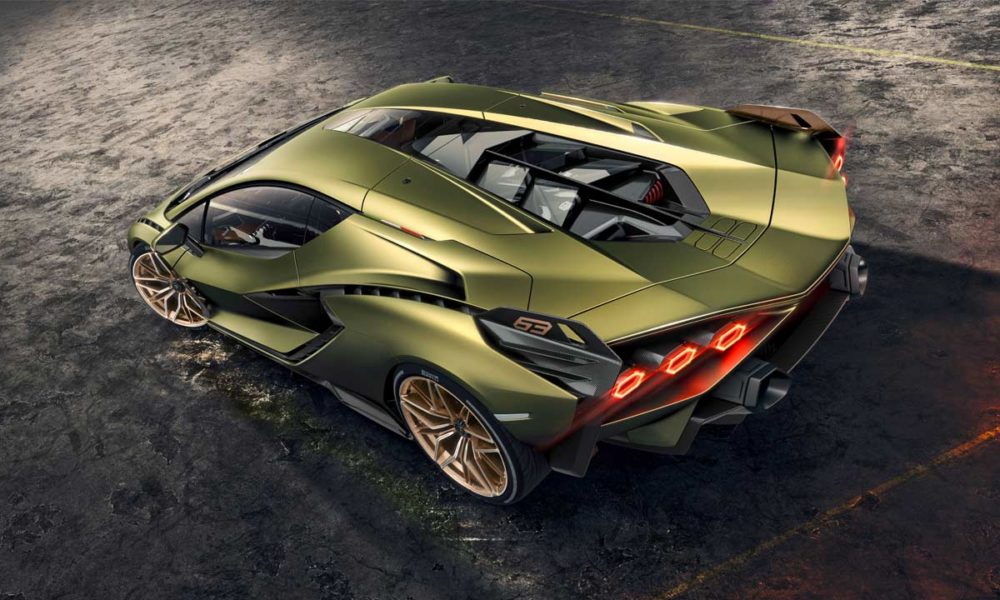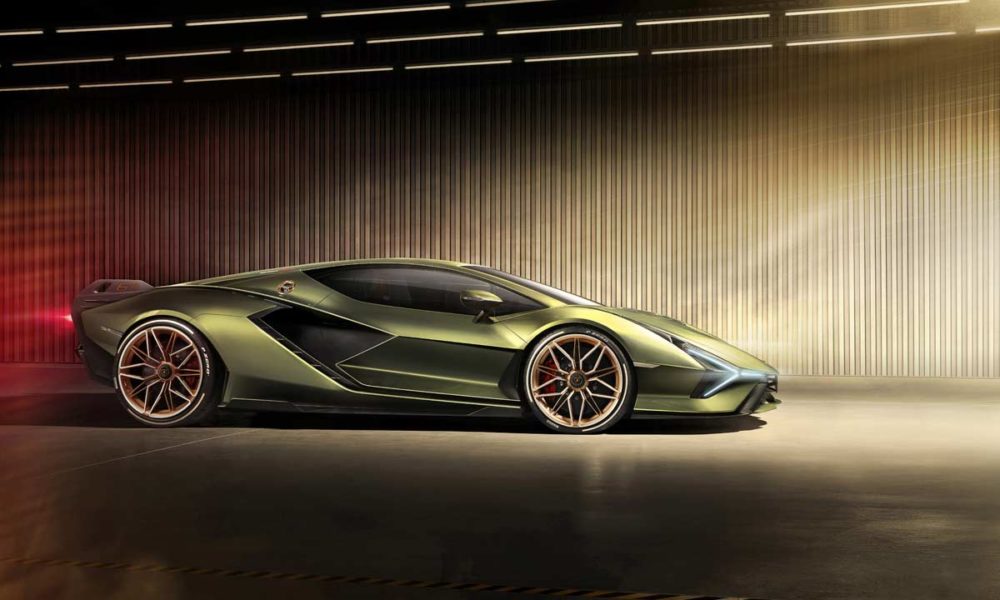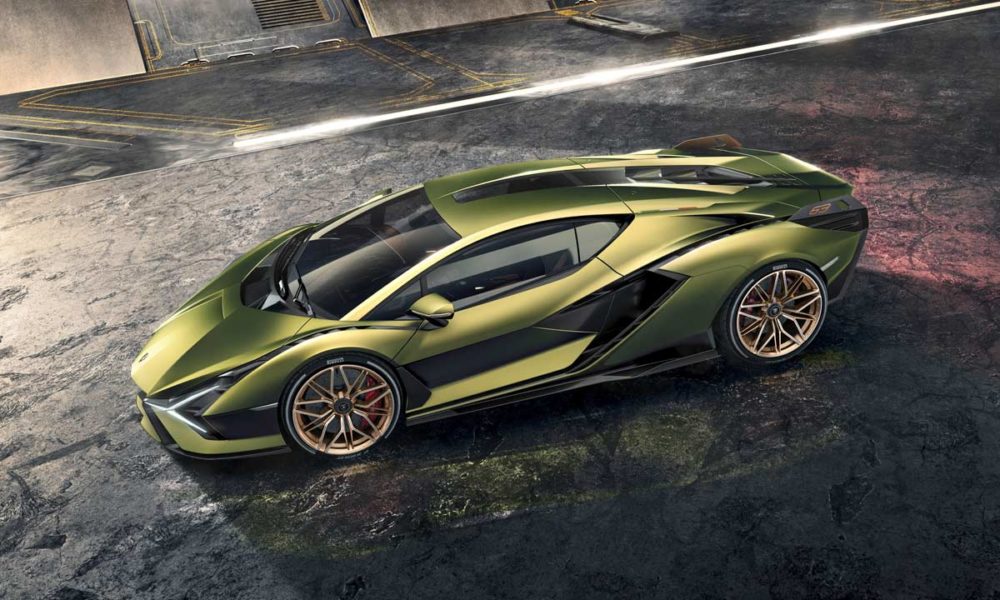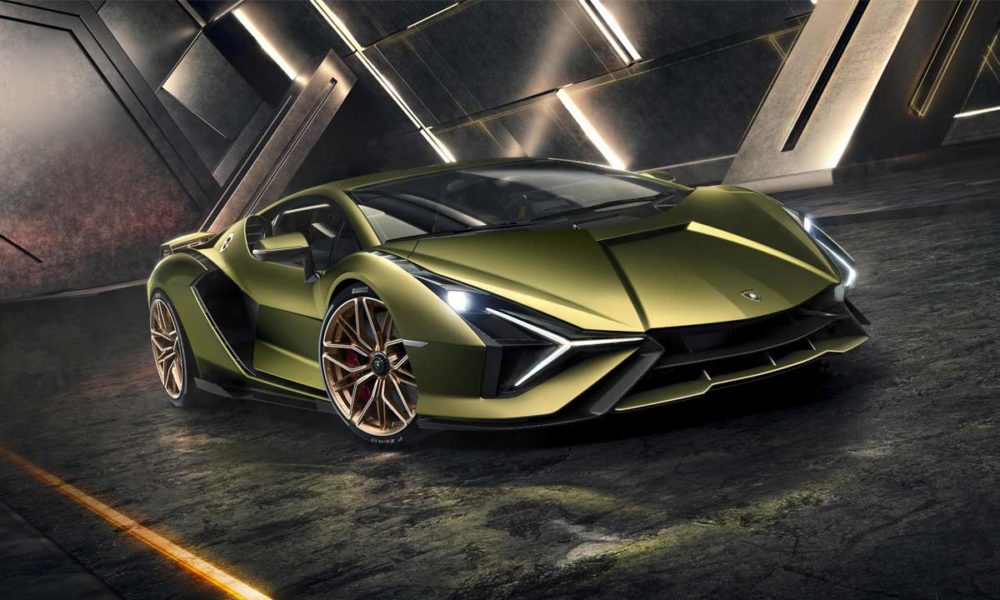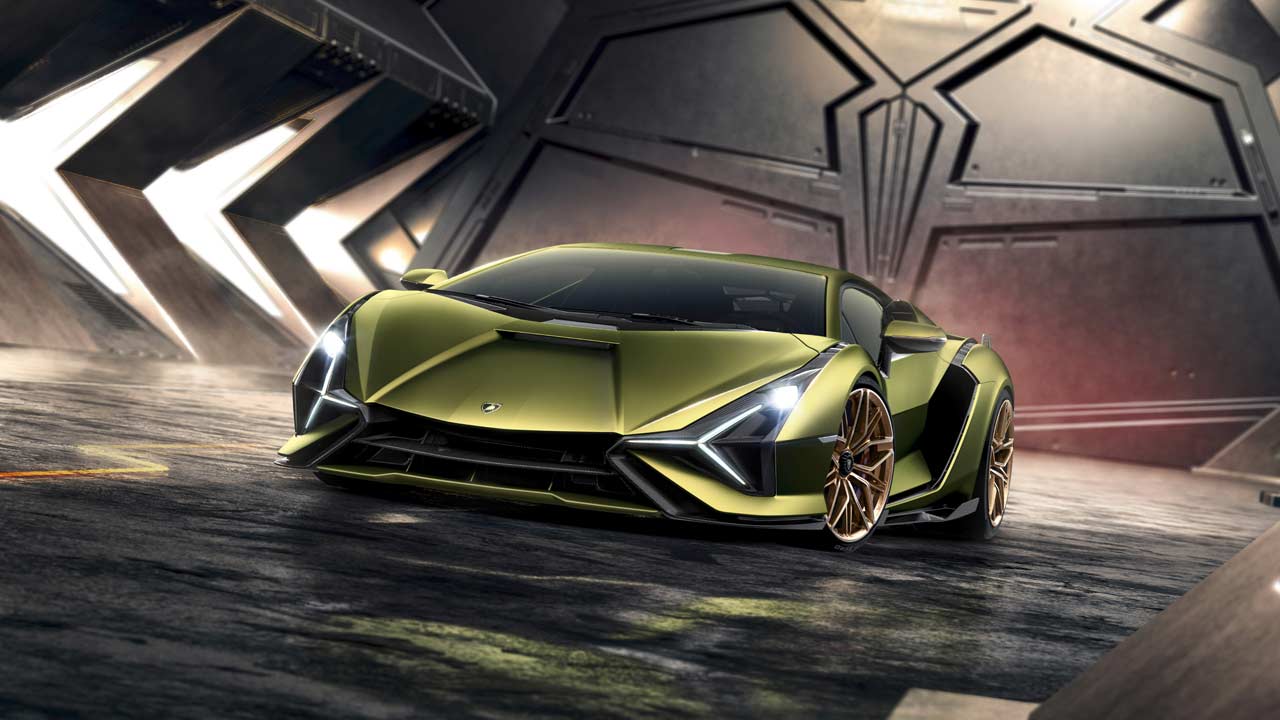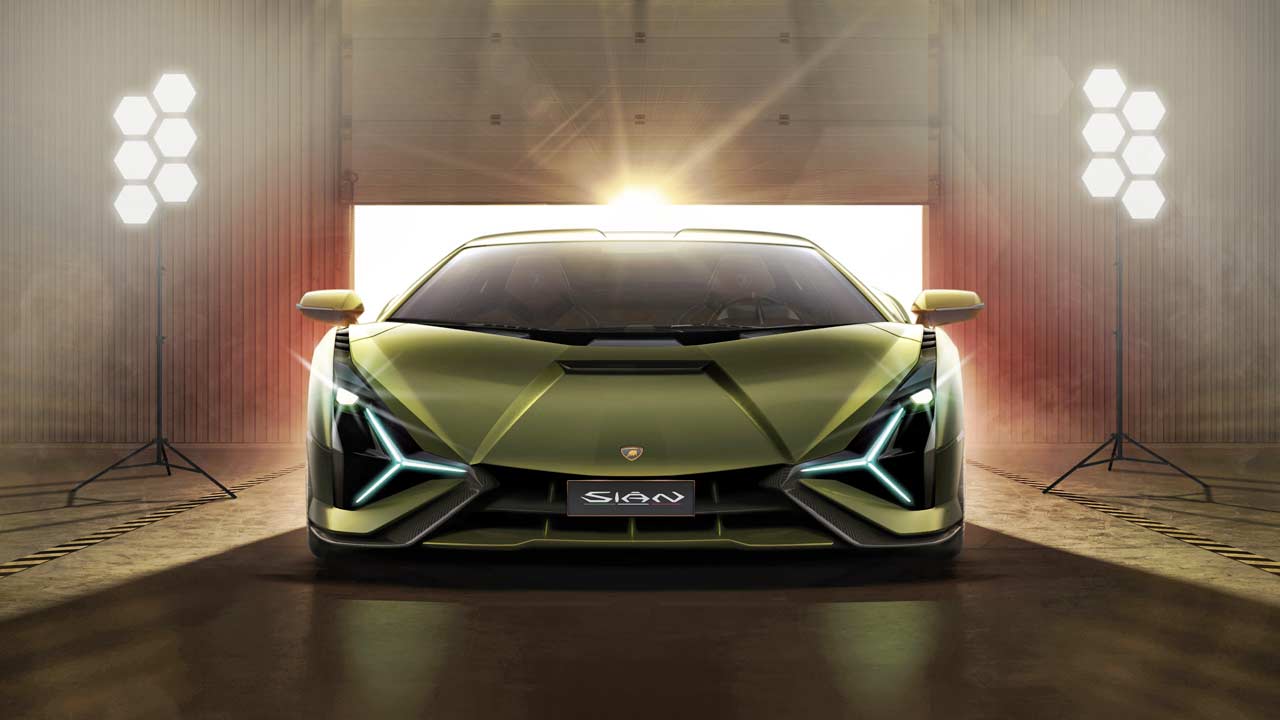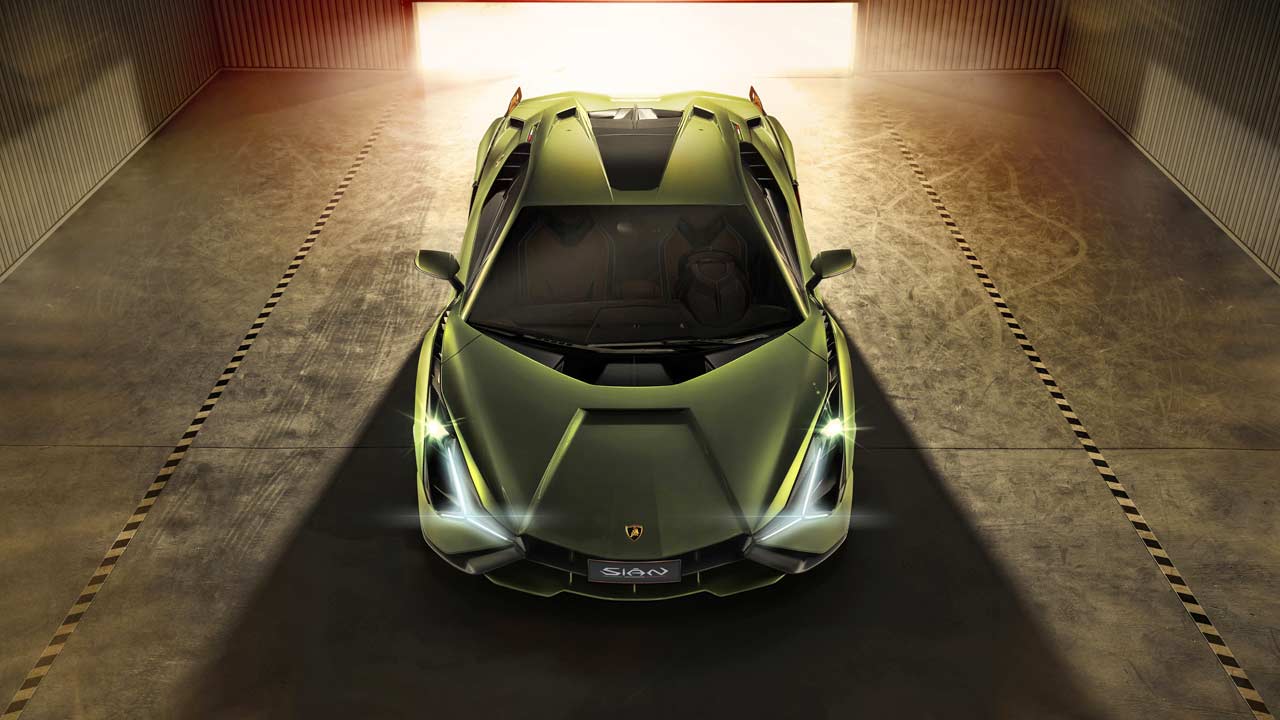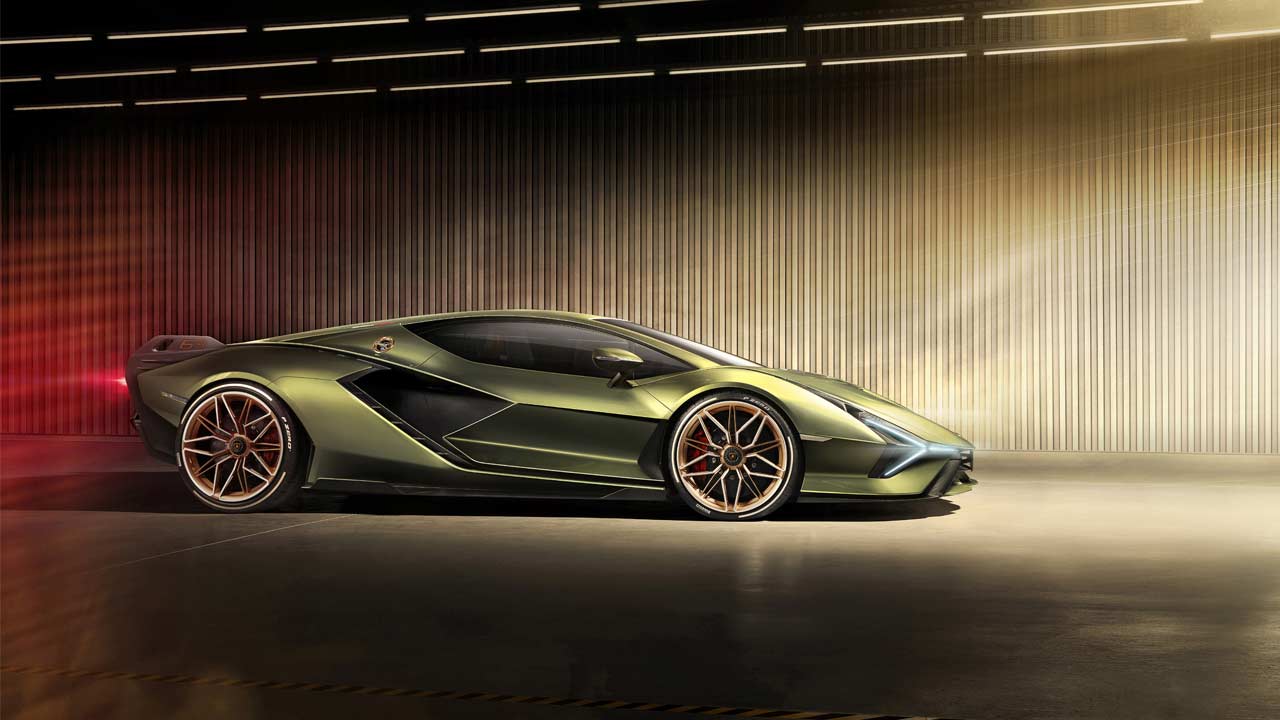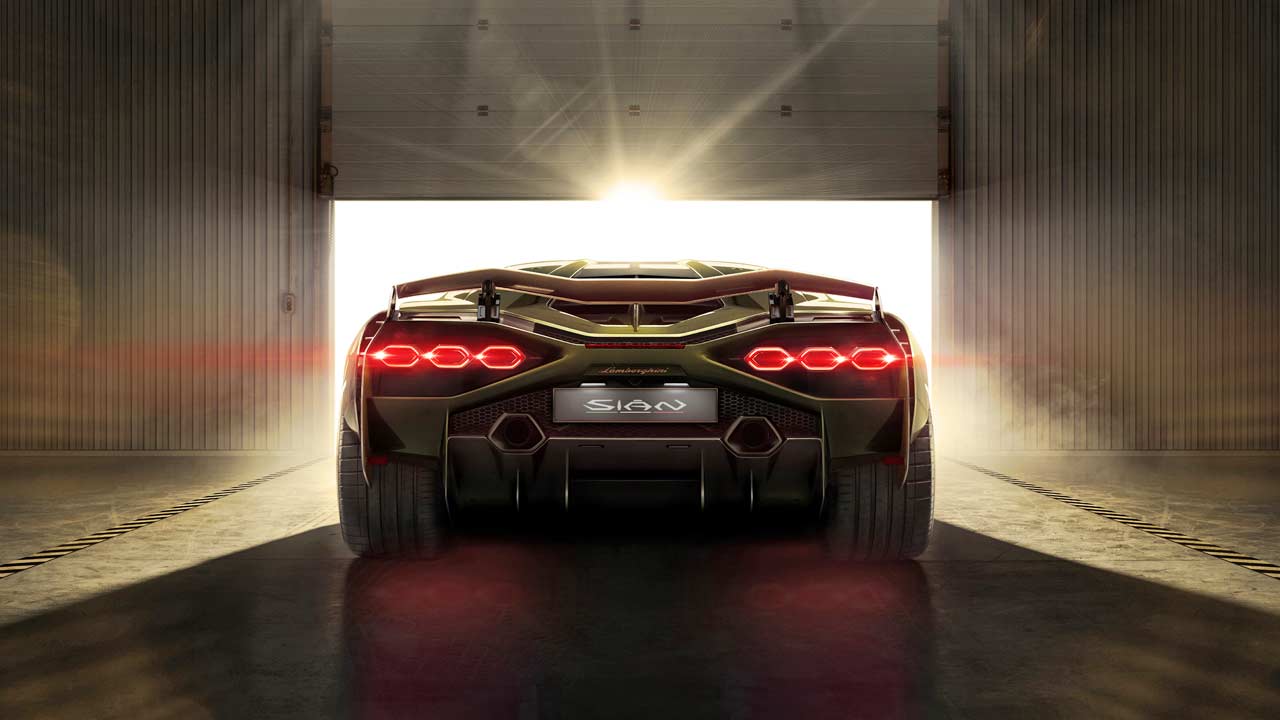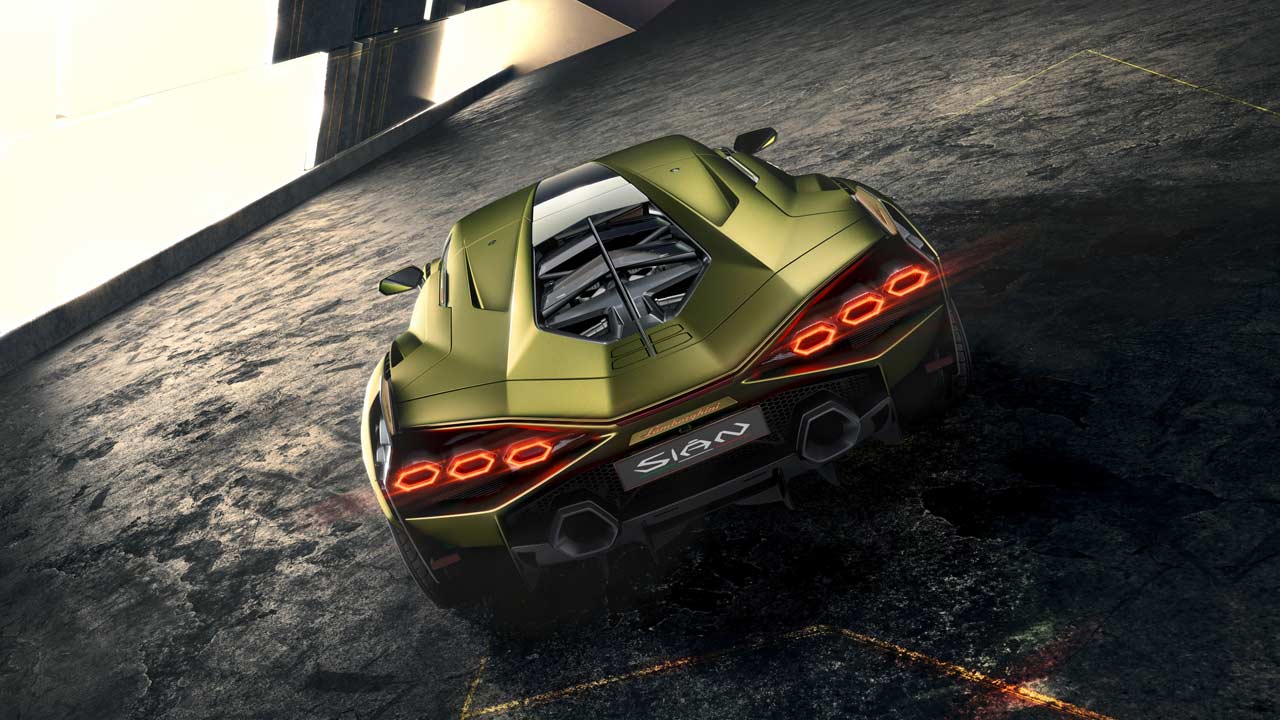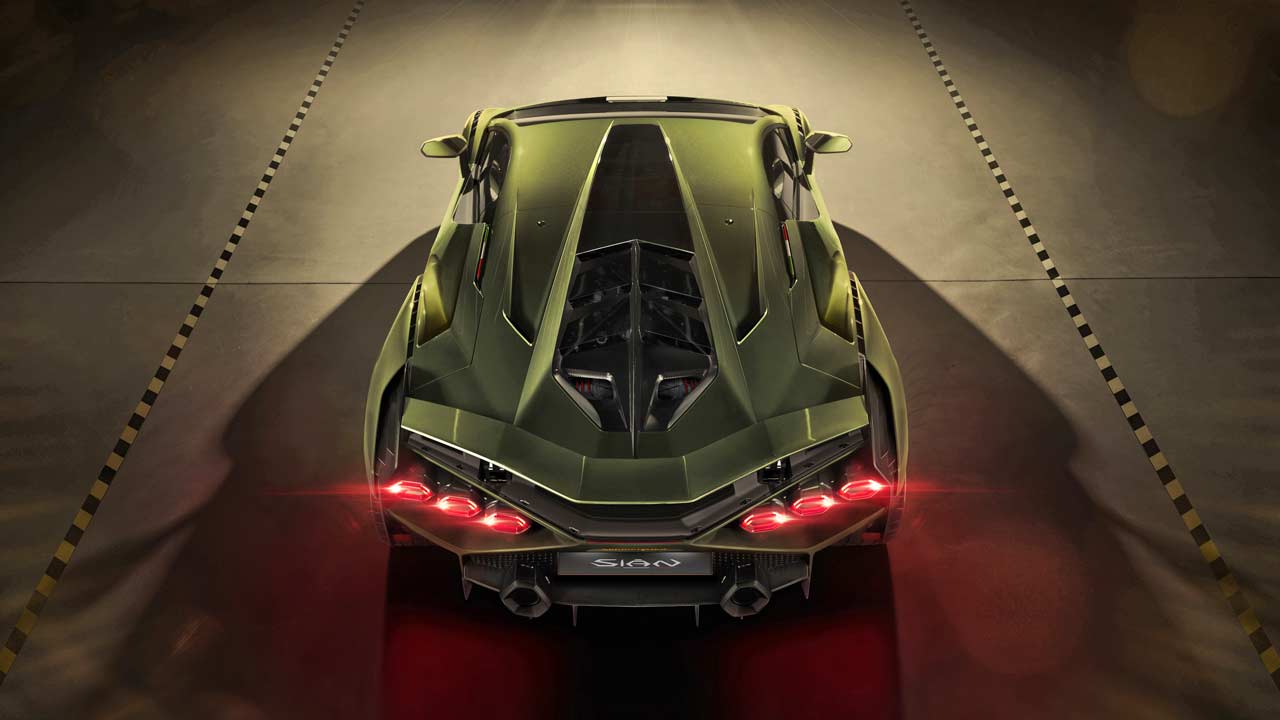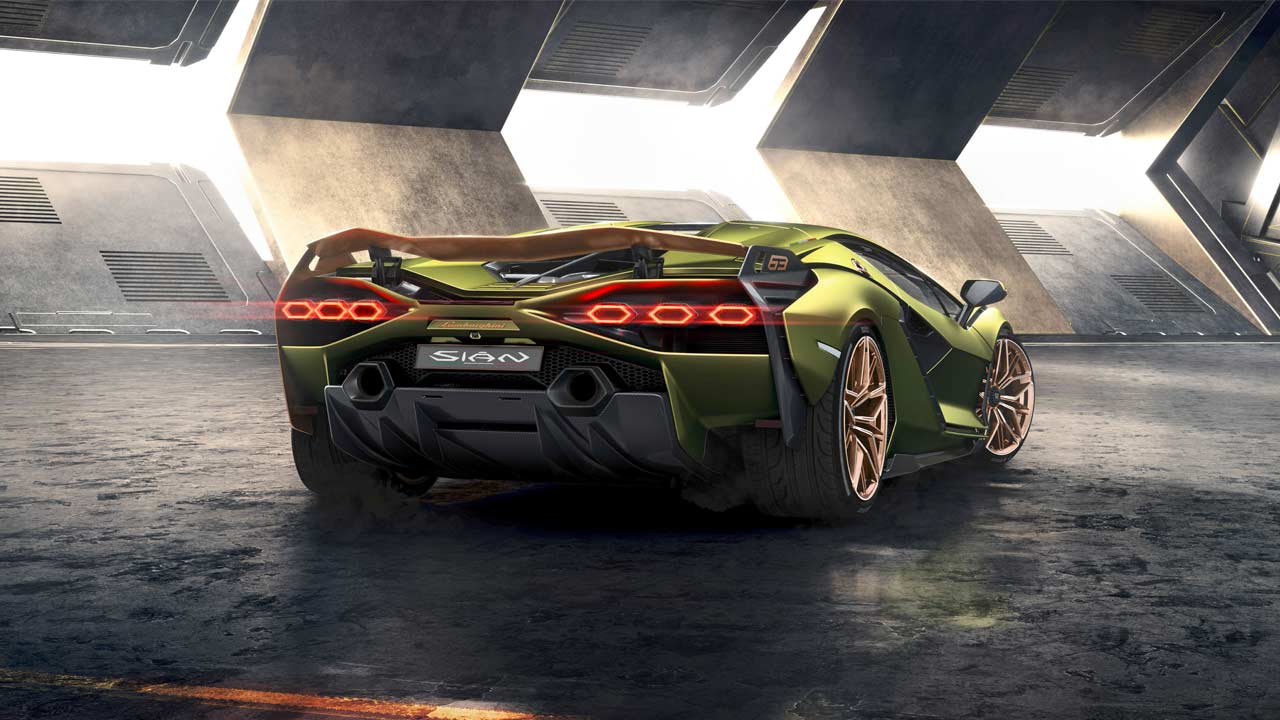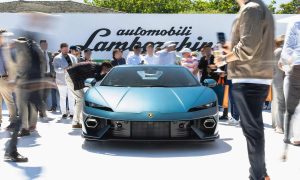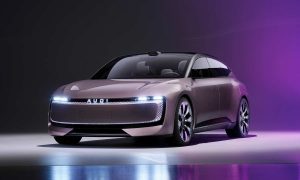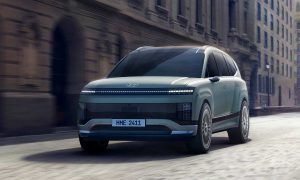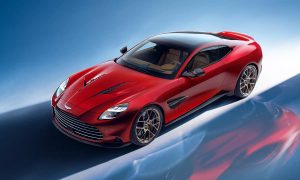The most expensive thermostat?
If the first thing that comes to your mind is the Terzo Millennio, you’re right. The Lamborghini Sián might not look as crazy as the aforementioned 2017 concept, but it is as crazy as a production Lamborghini should be.
The design is a mix of sharp lines, creases, signature Y-shapes, and NACA ducts. The extremely busy-looking rear-end has 6 hexagonal taillamps, which according to Lamborghini, were inspired by the Countach. The active rear wing has been integrated with the rear profile and extends out only during driving.

Airflow is directed through the front splitters and through the front bonnet, through the side air intakes and outlets and over the rear spoiler. In the roof, the Periscopio tunnel is also a modern take from the Countach; it links with the slats of the rear engine cover.
Lamborghini says that the Sián utilizes a unique material science for the first time in an automotive application. Active cooling vanes on the rear (behind the rear wing) use Lamborghini patented technology. The operation of these vanes is triggered by the smart-material elements reacting to the temperature generated by the exhaust system, causing them to rotate and provide a lightweight cooling solution.
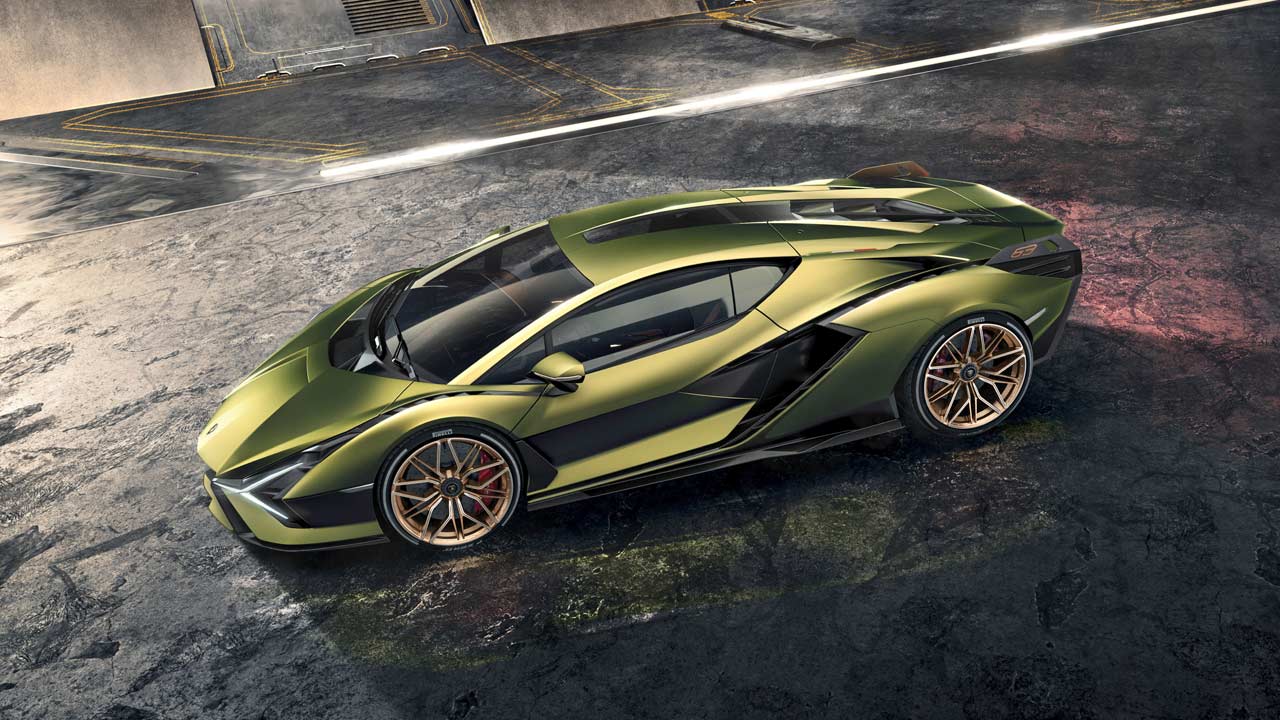 The name doesn’t come from the bulls..
The name doesn’t come from the bulls..
This particular example is finished in Verde Gea (green) with details in Oro Electrum (electric gold) – a multilayer color containing golden flakes and golden crystals. Apparently, the finish visualizes Lamborghini’s electrified future. The wheels measure 20-inch at the front and 21-inch at the rear, shod with 255/30 and 355/25 P Zero Corsa tyres.
In case you’re wondering, the name Sián means flash or lightning in a Bolognese dialect, a perfect name for the first electrified Lamborghini production car.
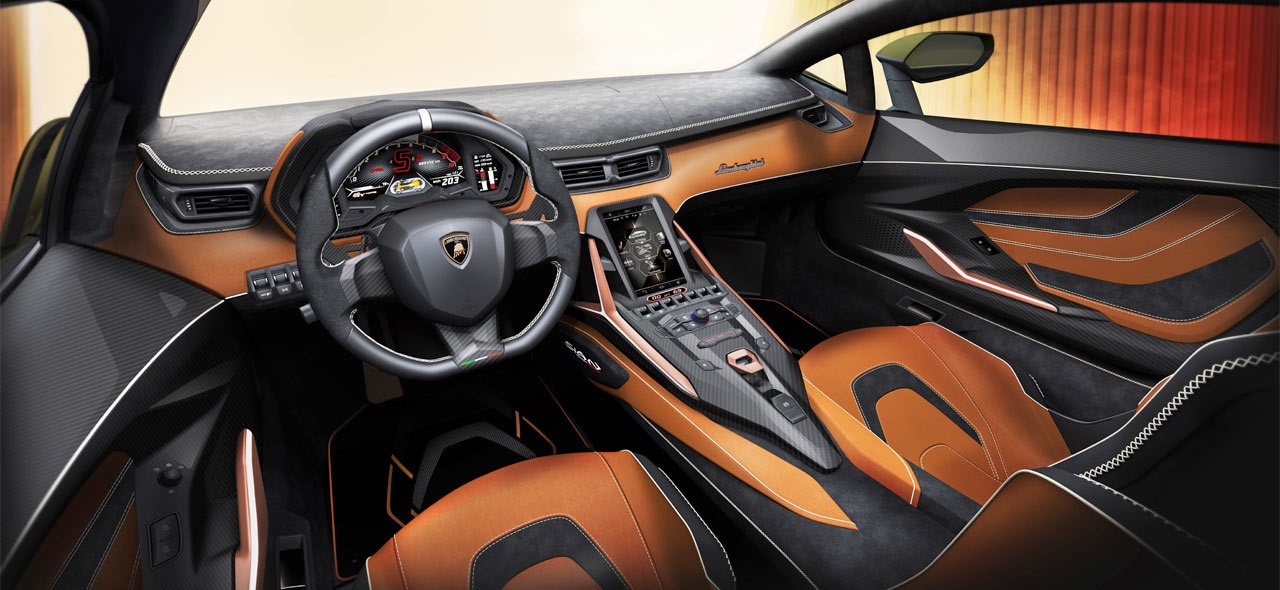
The interiors of the Sián look like the next-generation version of the Aventador, with a portrait-style touchscreen infotainment system. Notice the Y-shapes on the centre console and the signature flip-up starter switch. Lamborghini calls the interior execution as Terra di Sant’Agata Bolognese with leather from Poltrona Frau implementing 3D printed parts for the first time.
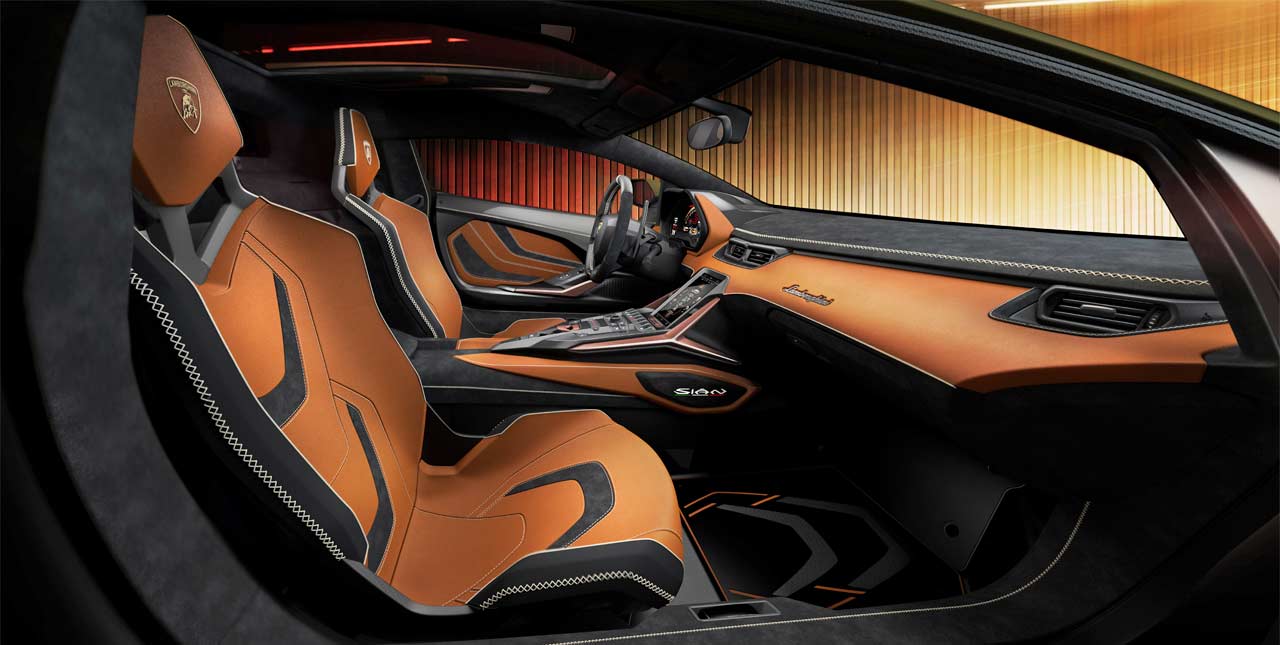 Electrochromic glass roof. Y not?
Electrochromic glass roof. Y not?
The fastest Lamborghini must be a visual and symphonic feast, as remarkable to those who see it pass by as those privileged to drive it. It takes inspiration from the Countach, but the Sián is a futuristic icon, not retrospective. Exclusivity is enhanced by Ad Personam personalization that every one of the 63 Sián owners has the privilege of creating, in conjunction with me and the Centro Stile team. 63 individuals worldwide will own not only the fastest, but a unique Lamborghini. – Mitja Borkert, Head of Design, Automobili Lamborghini
As Mitja says, only 63 units will be built and all are already sold out. The 63 represents the founding year of Automobili Lamborghini.
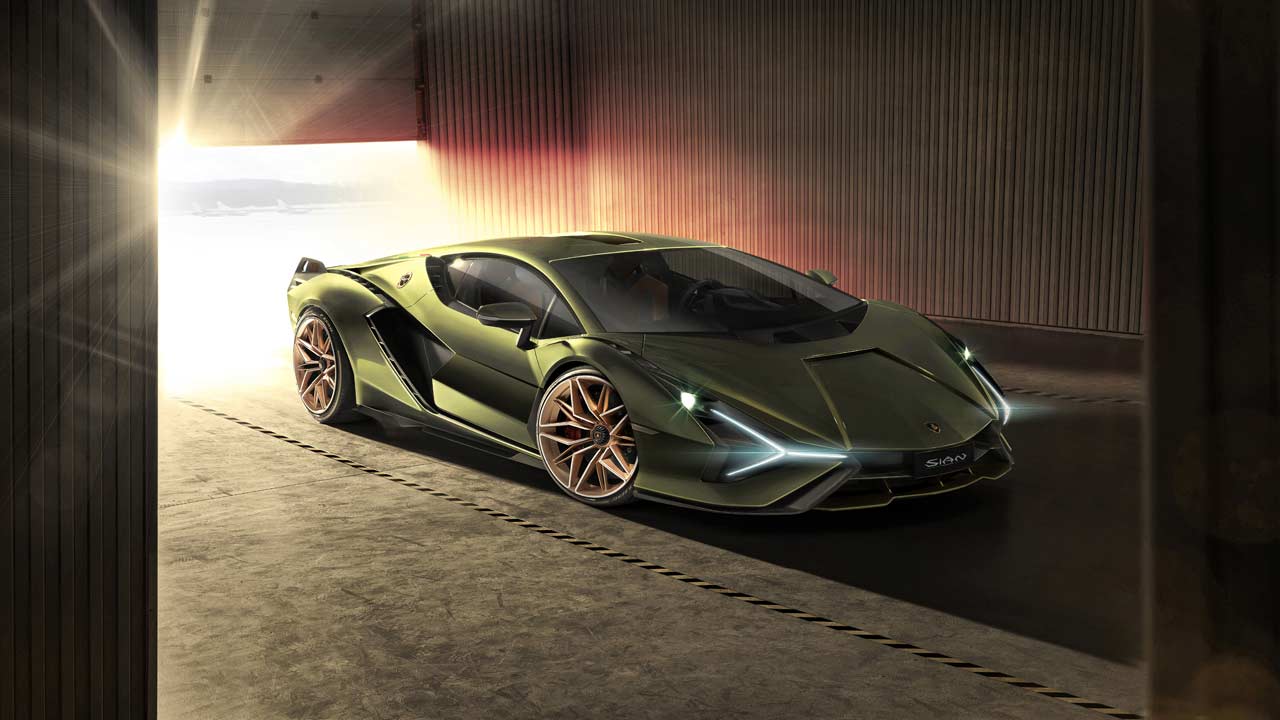
Powertrain
As for the business end of the story, the Lamborghini Sián is a hybrid hypercar. The iconic 6.5L naturally aspirated V12 engine is complemented by a 48-volt e-motor. The combustion engine incorporates titanium intake valves, and now produces 784 metric hp (577 kW) at 8,500 rpm and 720 Nm (531 lb-ft) of torque at 6,750 rpm – the highest output ever from a Lamborghini power plant. The electric motor offers an additional 34 hp and 38 Nm (28 lb-ft) of torque; the total system output is 818 metric hp (602 kW).
What’s more interesting is that the 34 hp electric motor has been incorporated into the gearbox for an immediate response and improved performance. There’s a direct connection between the electric motor and wheels, and the e-motor also supports low-speed maneuvers such as reversing and parking with electric power alone. Transmission is still the 7-speed ISR, sending power to all four wheels via Haldex AWD system with rear mechanical self-locking differential.
Better than SVJ
The Sián’s power-to-weight ratio according to Lamborghini, is better than that of the Aventador SVJ, thanks to extensive usage of lightweight materials. Speaking of which, the hypercar uses a supercapacitor instead of lithium-ion batteries for a quick response. It apparently is three times more powerful than a battery of the same weight and three times lighter than a battery producing the same power. Located in the bulkhead between the cockpit and engine, it ensures perfect weight distribution. The electric system with the supercapacitor and e-motor weighs only 34 kg (75 lbs), resulting in a remarkable weight-to-power ratio of 1.0 kg/hp, Lamborghini said. That’s right, Lamborghini electrified not to save the world, but to go even faster.
Advanced regenerative braking system
Thanks to the symmetric behavior of the supercapacitor, which contrary to the traditional lithium-ion batteries, can be charged and discharged with the same power. This according to Lamborghini, enables the energy storage system to be fully charged every time the vehicle brakes. The energy stored is an instantly-available power boost, allowing the driver to immediately utilize the additional torque when accelerating away, making the Sián more than 10% faster than a car without this system. The e-motor automatically disconnects at around 130 km/h (81 mph).
The most powerful Lamborghini ever produced is claimed to accelerate from 0-100 km/h (62 mph) in under 2.8 seconds and reach a top speed of over 350 km/h (217 mph).
Update: Lamborghini’s hybrid hypercar officially named Sián FKP 37

Leave a Reply
Note: Comments that are unrelated to the post above get automatically filtered into the trash bin.
